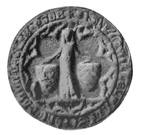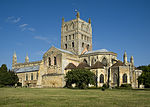Tewkesbury Museum
Tewkesbury Museum is a small community museum dedicated to the social history and heritage of Tewkesbury in Gloucestershire, England. The museum is housed in a 17th-century half-timbered building at 64 and 64a Barton Street in property which was given to the Borough of Tewkesbury in 1956 on the express condition that it be used as a museum; but the museum did not open until 1962, after all of the previous tenants of the building had left. Complications introduced by local government reform in 1974 almost led to its demise. The ancient Borough of Tewkesbury was dissolved and incorporated into the new District Council covering North West Gloucestershire. The first Clerk for the new Council persuaded Councillors that it should be named Tewkesbury Borough and he transferred as much of the old Borough as he could to the new Borough. This included an attempt to transfer the Museum. After some legal advice, the Museum reverted to the Town Council’s control.The building is Grade II* listed by English Heritage.An active society of Friends of Tewkesbury Museum supports the work of the museum.
Excerpt from the Wikipedia article Tewkesbury Museum (License: CC BY-SA 3.0, Authors).Tewkesbury Museum
Barton Street,
Geographical coordinates (GPS) Address Website External links Nearby Places Show on map
Geographical coordinates (GPS)
| Latitude | Longitude |
|---|---|
| N 51.9926 ° | E -2.1553 ° |
Address
Tewkesbury Museum
Barton Street 64
GL20 5PX , Priors Park
England, United Kingdom
Open on Google Maps











